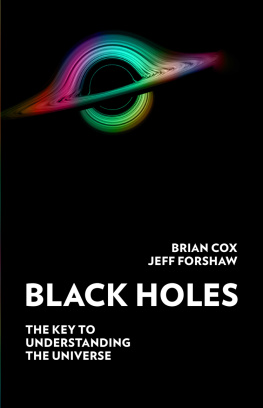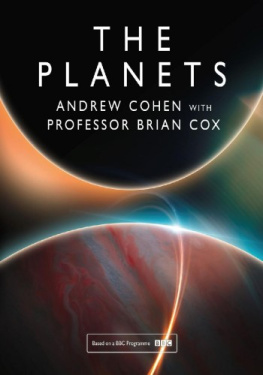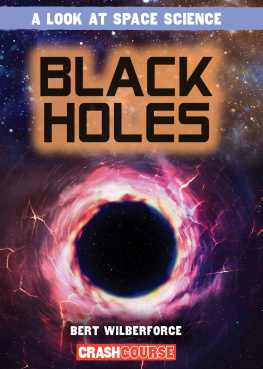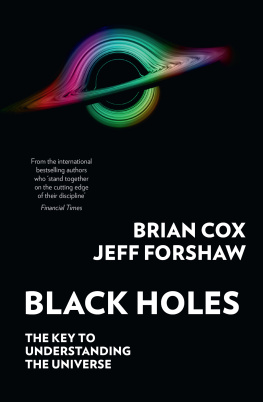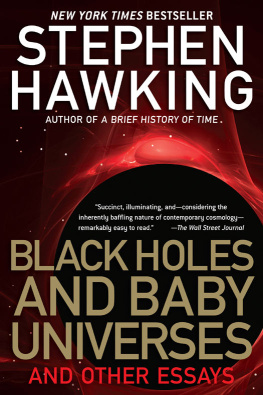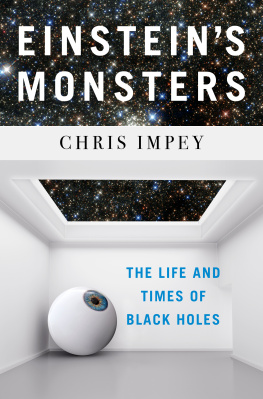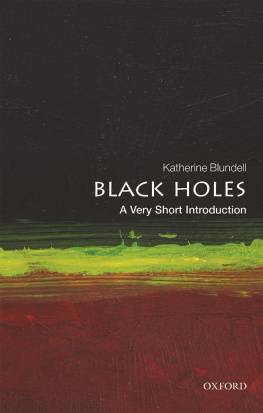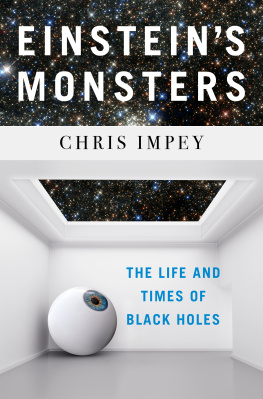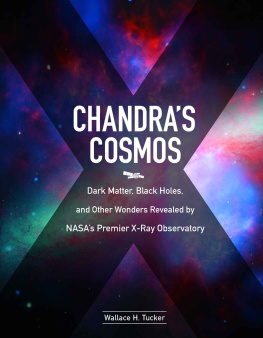William Collins
An imprint of HarperCollinsPublishers
1 London Bridge Street
London SE1 9GF
WilliamCollinsBooks.com
HarperCollinsPublishers
Macken House, 39/40 Mayor Street Upper
Dublin 1, D01 C9W8, Ireland
Text Brian Cox and Jeff Forshaw 2022
Images HarperCollinsPublishers 2022 unless otherwise indicated
Illustrations by Martin Brown and Jack Jewell
Cover image Shutterstock
Brian Cox and Jeff Forshaw assert the moral right to be identified as the authors of this work
A catalogue record of this book is available from the British Library
All rights reserved under International and Pan-American Copyright Conventions. By payment of the required fees, you have been granted the non-exclusive, non-transferable right to access and read the text of this e-book on-screen. No part of this text may be reproduced, transmitted, down-loaded, decompiled, reverse engineered, or stored in or introduced into any information storage and retrieval system, in any form or by any means, whether electronic or mechanical, now known or hereinafter invented, without the express written permission of HarperCollins.
Source ISBN: 9780008350758
Ebook Edition October 2022 ISBN: 9780008390624
Version: 2022-09-28
In my entire scientific life, extending over forty-five years, the most shattering experience has been the realization that an exact solution of Einsteins equations of general relativity, discovered by the New Zealand mathematician, Roy Kerr, provides the absolutely exact representation of untold numbers of massive black holes that populate the universe. This shuddering before the beautiful, this incredible fact that a discovery motivated by a search after the beautiful in mathematics should find its exact replica in Nature, persuades me to say that beauty is that to which the human mind responds at its deepest and most profound.
Subrahmanyan Chandrasekhar
The black holes weve explored so far have inhabited the mathematical landscape of general relativity. These remarkable universes were known to and broadly speaking dismissed by physicists for a large part of the twentieth century, Einstein included, on the very reasonable grounds that we shouldnt conclude that something exists just because a physical theory allows it. If black holes are to exist in the real sky rather than the mathematical one, Nature must construct them. Real black holes, formed from stellar collapse, are the focus of this chapter. We will learn that the solutions to Einsteins equations of general relativity discovered by Schwarzschild and Kerr are of extraordinary significance in the real Universe because they are the only possible solutions for the spacetime in the region outside of every black hole. Nowhere else in physics is something apparently so complicated as a collapsing star reduced to something so simple and with such precision. The Schwarzschild solution depends on just one number (the mass) and the Kerr solution adds a second number (the spin). Knowing these two numbers alone, we can compute the gravitational landscape in the region outside of real black holes, exactly. That is an astonishing claim it does not matter what collapsed to form the black hole, nor does it depend on how it fell in. All that remains outside the horizon is a spacetime perfect in its simplicity. This is what moved Chandrasekhar to write the powerful prose quoted above. Quoting Chandrasekhar again: The black holes of nature are the most perfect macroscopic objects there are in the universe and since the general theory of relativity provides only a single unique family of solutions for their descriptions, they are the simplest objects as well.
John Wheeler, as ever, found a more pithy phrasing: Black holes have no hair. In his memoir Geons, Black Holes and Quantum Foam, Wheeler recounts an exchange with Richard Feynman in which the often irreverent Feynman accused him of using language unfit for polite company. I tried to summarize the remarkable simplicity of a black hole by saying a black hole has no hair. I guess Dick Feynman and I had different images in mind. I was thinking of a room full of bald-pated people who were hard to identify individually because they showed no differences in hair length, style, or colour. The black hole, as it turned out, shows only three characteristics to the outside world: its mass, its electric charge (if any) and its spin (if any). It lacks the hair that more conventional objects possess that give them their individuality No hair stylist can arrange for a black hole to have a certain colour or shape. It is bald.
A series of papers throughout the late 1960s and early 1970s established the magnificent simplicity of black holes, as viewed from the outside. Once formed, according to general relativity, the horizon shields us from the complexities within. Even if something as large as a planet or star falls across the horizon, the American physicist Richard H. Price proved, in 1972, that the black hole quickly settles down again into oblivious perfection. For a Schwarzschild black hole, the horizon will reassume the shape of a perfect sphere, and any disturbances caused by the in-falling body will be smoothed out by the emission of gravitational waves. The conclusion is that the spacetime outside of all black holes in the Universe is either Schwarzschild or Kerr.
What, then, happens in the case of a real collapsing star? Is it possible or even inevitable that a dense enough lump of matter will fall inwards to create a horizon and ultimately disappear into a spacetime singularity? The first attempt at addressing this question came back in 1939, when Robert Oppenheimer and Hartland Snyder showed that a star will collapse to form a black hole under certain assumptions. Specifically, they considered a pressureless ball of matter with perfect spherical symmetry. You may well baulk at this: the interior of a star is certainly not a zero-pressure environment, and the collapsing matter isnt a perfect sphere. Perhaps the OppenheimerSnyder conclusion that black holes can form in Nature is associated with the assumption of perfect spherical symmetry. If everything is falling towards a single, precise point in the middle of the ball then no wonder something weird happens. The more realistic case will have matter swirling around and involve all the complexity of real stars. Maybe that leads to a collapse that does not generate a spacetime singularity. For many years, the possibility that black holes do not form out of collapsing stellar matter remained a mainstream view.
The publication of Roger Penroses paper in January 1965 essentially resolved the issue. He showed that the complex dynamics of the stellar collapse does not matter, and black holes must form if certain conditions are met.
Penrose demonstrated that the formation of a spacetime singularity is inevitable once a distribution of matter has become so compressed that light cannot escape from it. Figure 8.1 is taken from Penroses paper (it is hand-drawn by Penrose himself) and provides an intuitive way of picturing the collapse of a star to form a black hole. Time (as measured by someone far away from the star, labelled outside observer on the diagram) runs from the bottom to the top, and one of the three space dimensions is not drawn. The surface of the star is therefore drawn as a circle on any horizontal slice through the diagram. For example, on the slice labelled C at the base of the diagram the stars surface is represented by the solid black circle. The dotted circle inside represents the Schwarzschild radius of the star (recall that for the Sun the Schwarzschild radius is 3 kilometres). All the complex physics of the stellar interior plays out inside the solid circle and the beauty of Penroses argument is that the details of whats happening there do not matter once the star has collapsed inside its Schwarzschild radius.

